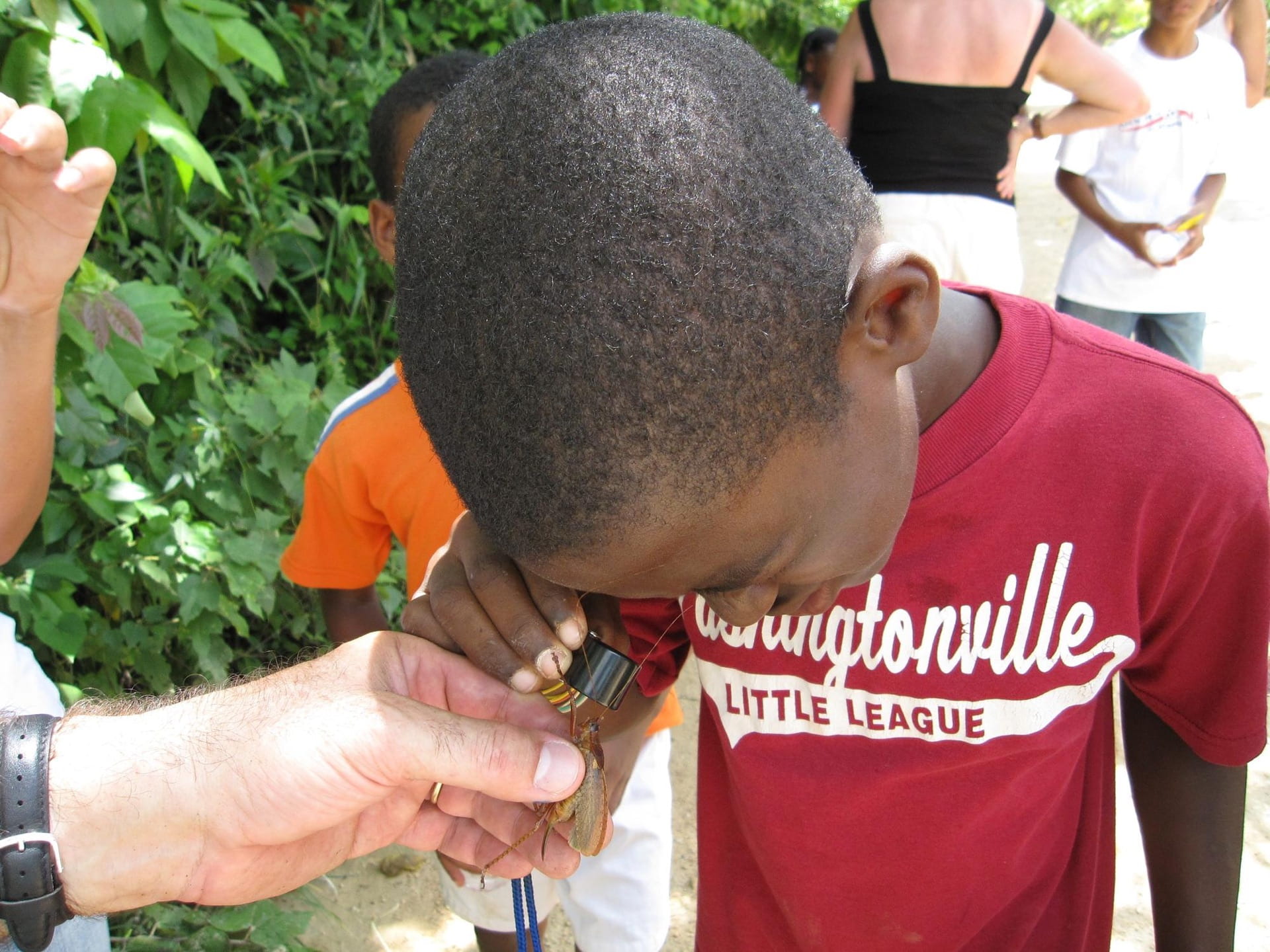Making a Difference: Insect Lessons
Juan José was the first to spot the katydid’s quivering antenna, then suddenly he made a quick grab and the green, squirming insect was his. One advantage to this tropical place is being surrounded by nature every day, year round. When one child grabbed at a bug quickly enough, the others would stretch out their hands for the catch—a dragonfly, grasshopper or beetle. Insects are certainly ubiquitous and approachable, like intricate little living machines that are also often attractive. In other words, ready subjects that can help young minds to develop and learn about life.
Once we agreed that insects were the little animals with three pairs of legs, the kids told me the Spanish names of many. Giant wasps (avispas), bumbling palm beetles (escarabajos), cicadas (cigarras), katydids, bees, ants, butterflies, dragonflies, all these they knew and many, many more. We studied some insects embedded in clear lucite blocks, like colorless versions of the amber familiar to Dominican children. We talked about what we could see there, and looked at each specimen with a magnifying hand lens held close to our eyes. We also listened to and then imitated insect sounds—the chirps of crickets, the scrapings of a katydid and the whine of a cicada. Later, as we walked along the strand of palms and thick tangled vegetation that hugs the sandy road near the beach, the children spotted insects everywhere, under leaves, on branches, underfoot and in the air. They were very surprised to learn that one could study insects as a job, that the national university in Santo Domingo, the UASD, offers classes in insect biology, and that it has a large collection of insects. I left them with a poster we produced with the UASD of the butterflies and moths of Hispaniola, and definitely look forward to our reunion next year. Until then, we’ll consider what we learned from our time last summer with the children of Las Terrenas.
Spring | Summer 2010, Volume IX, Number 2
Brian D. Farrell is Professor of Biology and Curator in Entomology at the Museum of Comparative Zoology, Harvard University. He can be contacted at bfarrell@oeb.harvard.edu.
Related Articles
A Practice in Full
Oscar Niemeyer’s gaze reveals nothing as the ten of us make our way through the throng of architecture students towards the rows of seats that fan out from his facing central chair. Loosely…
The (Not Yet) Dialogue Project
So I have another sip of my coffee while looking out and enjoying the Chilean view. From here the city movement below seems to be in slow motion. The view is kind of foggy, not very crisp…
Modernity in Peru
When one thinks of Peru, one might think of colonial plazas or the splendid pre-Columbian Incan masterpiece of Macchu Picchu…





